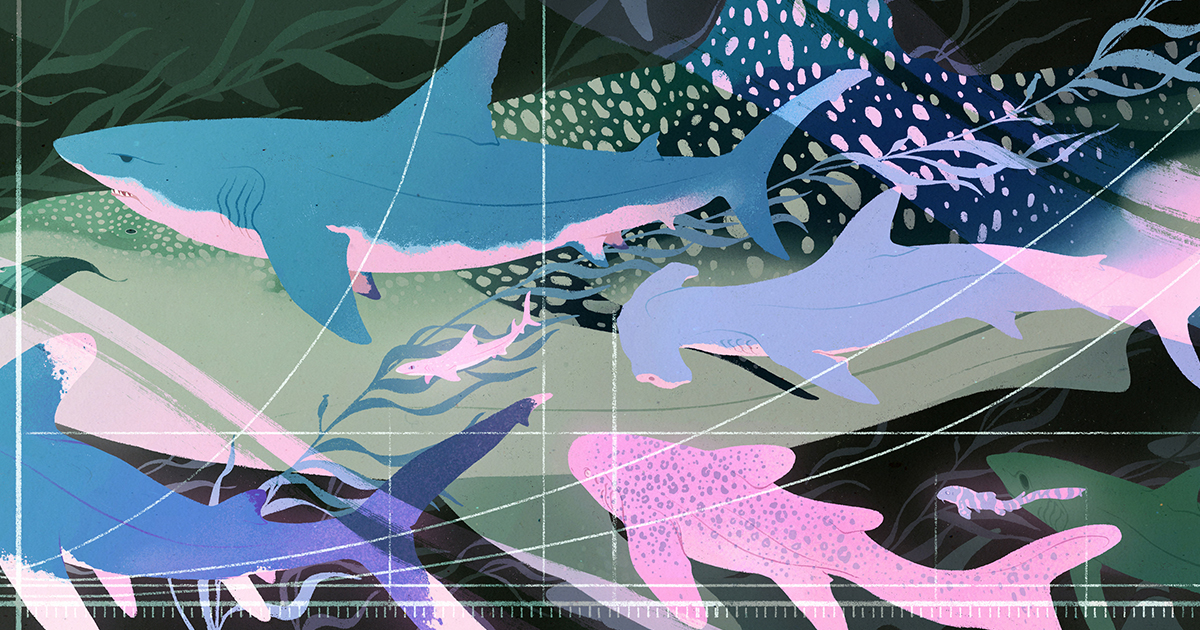It takes skill and patience to design a tiny bespoke backpack and fit it onto an Australian bearded dragon.
But Kristoffer Wild regularly found himself doing just that during his PhD at the Bowra Wildlife Sanctuary in Queensland.
“I became a tailor during my PhD,” the University of Melbourne ecologist joked.
He would measure the neck and chest of each lizard before quickly setting up the sewing machine, cutting specially designed material and stitching tiny, individually measured outfits.
Dr Wild then wrangled the backpacks — which weighed about as much as an AAA battery — onto the Australian central bearded dragons (Pogona vitticeps).
After the hour-long tailoring session, the lizards were set free sporting a new outfit stuffed with a GPS tracker, an accelerometer and a temperature tracker.
Kristoffer Wild spent a year of his PhD tracking bearded dragons at the Bowra Sanctuary. (Supplied: Kristoffer Wild)
“[The backpack records] every single second of what the animal is doing, and senses if it’s accelerating forward, backward, up and down,” Dr Wild said.
The year-long study led to a wealth of data about how the lizards’ temperature changed throughout the seasons, where they went and what they did.
But of all the data — which has today been published in the Journal of Animal Ecology — one thing stood out.
The speediest bearded dragons were the most likely to not survive to the end of the experiment.
“We usually think animals that are faster are more likely to evade predation,” Dr Wild said.
“I was dumbfounded at first.“
Not only is this counterintuitive, but it goes against what prior research has found in the lab.
So what is going on?
Survival of the slowest
Dr Wild and his team tracked 40 bearded dragons.
Because the team lived close by, they could also quickly check on any lizards when there was a problem, or when they were eaten by a predator.
“We could pinpoint the exact time of death and usually we could work out what caused it based off of how the carcass was left,” Dr Wild said.
At the end of the study, they found most of the bearded dragons were eaten in the spring, and females were much more likely than males to be eaten.
“The males have to defend their territories, whereas the females have to hunker down and save all their energy for their eggs,” he said.
These bearded dragons spend most of their days in log piles or woody areas. (Supplied: Kristoffer Wild)
But why the speediest dragons were the most likely to die was — at first — a mystery.
The Australian central bearded dragon is found throughout inland Australia, and at their largest can be up to 60 centimetres from tip to tail.
Its beefy nature might explain some of the results, Dr Wild suggested.
Because of their size, adult bearded dragons mostly use stealth, as opposed to speed, to avoid predators.
“What does a bearded dragon do when you see it in the field? They use their patterns to blend into the background,” he said.
This is not the case for all lizards. Younger or smaller lizards instead try to use their speed to outrun a predator, but this makes them tasty targets.
“They’re like little cheeseburgers running around,”
he said.
“Whereas when they’re larger, they’re relying more on blending into their environment.”
Nature is ‘often not that black and white’
However, Martin Whiting, an animal behavioural researcher at Macquarie University who specialises in lizards, said that although the paper was “valuable”, larger sample sizes were needed to better understand survival in the wild.
“We do predict that animals that can sprint faster have a greater chance of surviving in the wild,” Professor Whiting said.
“But this is still poorly understood, and this paper helps shake that paradigm a little.”
Bowra Wildlife Sanctuary is in central Queensland near the border of New South Wales. (Supplied: Kristoffer Wild)
Although past research has shown in lab conditions that lizards that are faster are more successful, Professor Whiting says there has not been enough research to confirm that is actually the case.
“What happens in nature is often not that black and white,” he said.
“There might be systems where being the fastest sprinter is good, like if you’re an antelope and about to be eaten by a cheetah. And then there are other systems where you might need to be more cryptic.”
“You may not ‘invest’ in being a good sprinter.”
Tracking even smaller animals
From getting a waterproof, smooth material made from a local outdoor company, to sewing the vests himself, Dr Wild did what he could to ensure the trackers did not harm the animals.
“We tracked the animals for a few days in a row just to make sure they were happy with the attachment, and they didn’t get [stuck] on a fence or something.
“It worked pretty great.”
But he also admits the vest is not foolproof.
“You do have to tell yourself, ‘Yes, we are manipulating the animals’ behaviour because we’re putting tracking gear on it,'” he said.
“But we’re trying to minimise [the disruption] at all costs.”
This includes how long it takes to put the outfit onto a bearded dragon.
“It’s like putting a T-shirt on a toddler,” he said.
“You’ve got to fit their head through the [shirt], and then you stick their little arms through the holes that you made for them.“
According to Dr Wild, at his best, he could put the vest on a wriggling lizard in just a few seconds.
And then, “once you get the T-shirt on, they’re totally fine with it”, he added.
The custom jackets and trackers were only a few grams, to avoid weighing down the bearded dragons. (Supplied: Kristoffer Wild)
According to Professor Whiting, the “gold standard” for putting a tracker on almost any animal is for the tracker to weigh about 5 per cent of the creature’s body weight.
If the animal were human-sized, this could be anywhere in the region of 3–5 kilograms — plenty of weight for a small tracker.
But the smaller the animal, the harder it is to fit in the battery, sensors and anything else you might need without going over 5 per cent.
An average bearded dragon female might be just 250 grams or so, meaning the whole kit needs to weigh under 12.5g.
Smaller lizards are even harder to attach trackers to.
“There are not that many studies where people attach this sort of technology to the animal and get this kind of data,” Professor Whiting said.
“It’s true the technology is getting better. We’re getting smaller batteries, for example, but once you get a smaller battery, then it’s going to run out faster as well.”
The team sewed little custom jackets for each bearded dragon they captured. (Supplied: Kristoffer Wild)
Dr Wild is looking to use this technology again in future research and is optimistic about it being used on smaller and smaller species.
“Five years ago, somebody would tell you you’re absolutely crazy if you were going to put [a GPS tracker and accelerometer kit] on something smaller than a bearded dragon,” he said.
“But I was talking to somebody the other day, and they’re putting accelerometers on little hatchling turtles to see how much movement they use when they’re hatching out of the nest.”
Source link

